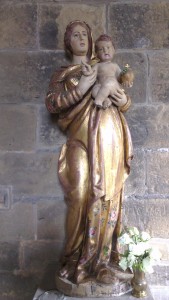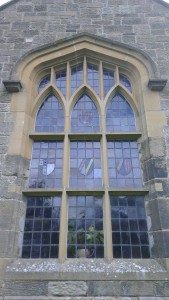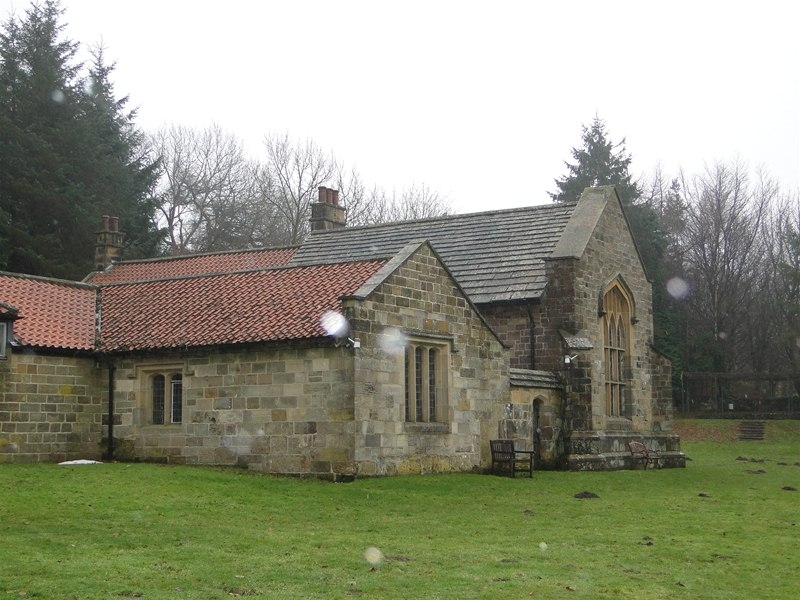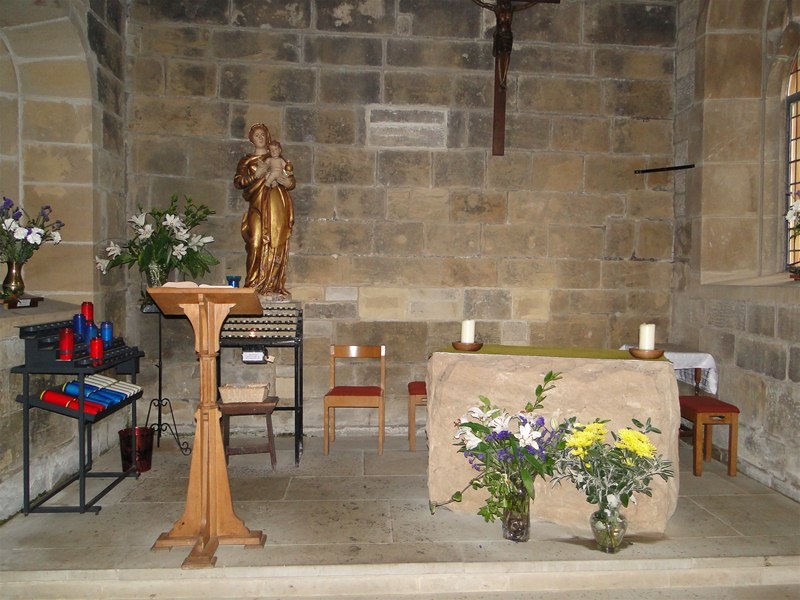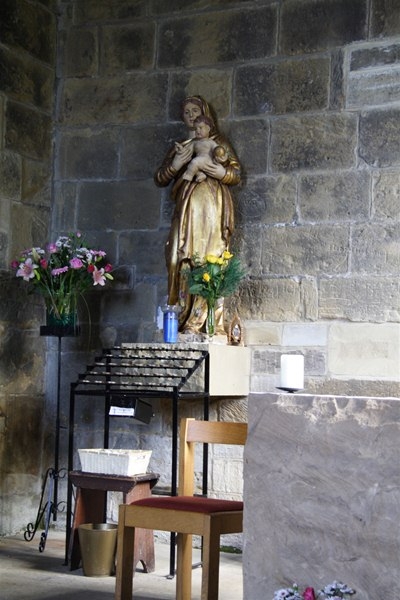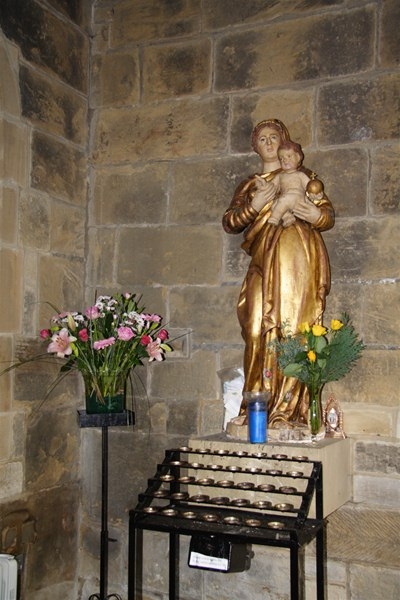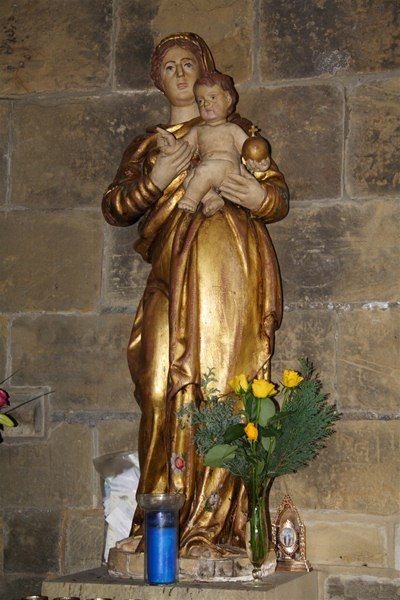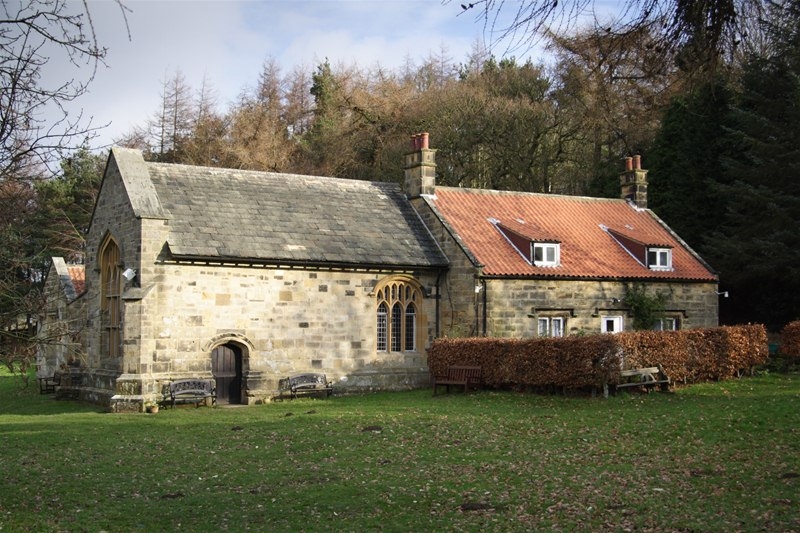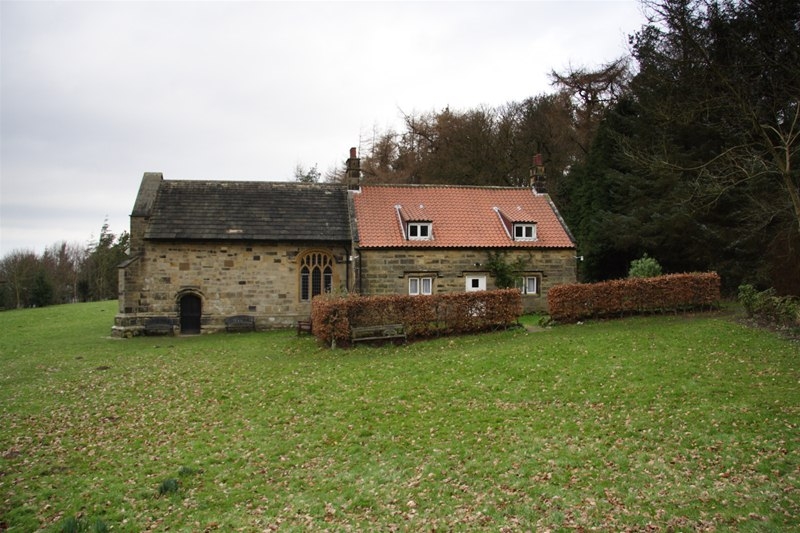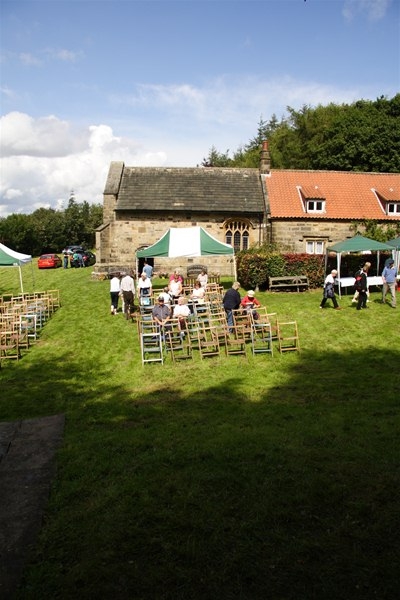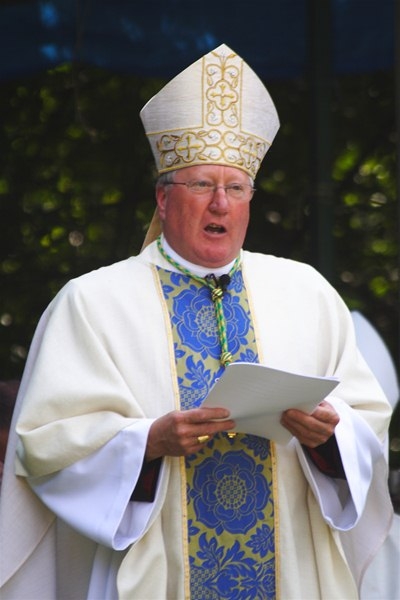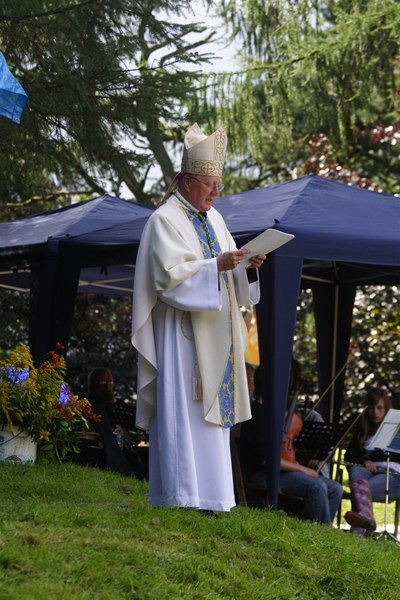History
Christians have visited this chapel of Our Lady, the Mother of Divine Grace, for hundreds of years. It is a holy place, sanctified by the prayers of many ordinary people. It stands high on a hill above the village of Osmotherley in North Yorkshire, facing west towards the Pennines.
The origins of the Lady Chapel are unknown. In 1366 the manor of Bordelby, within which Mount Grace Priory and the Lady Chapel both stand, was conveyed to trustees for some unspecified religious purpose, and in 1397 John Ingelby was granted a licence for a chapel and the celebration of Mass in the manor house there. Then in 1398 Thomas de Holand, who may have been one of the original trustees, was granted a licence to found a Carthusian Monastery “in his manor of Bordelby.” It was founded in honour of the Assumption of the Blessed Virgin and Saint Nicholas and was called the House of Mount Grace of Ingleby. The foundations of the Lady Chapel reveal that the monks built it around the same time as the later cells in the monastery, before the end of the 15th century, and most probably for their own use. There is evidence that a certain Hugh lived as a hermit in the chapel, but the first mention of a resident priest is not until 1522.
In 1515 a former Franciscan, Thomas Parkinson, entered the hermitage at the Lady Chapel, provided for by Katharine of Aragon, after whom the Queen Katherine hotel in Osmotherley is named. He appears to have remained there until the dissolution of Mount Grace Priory in 1539. At that time the lands and buildings of the priory passed into the possession of Sir James Strangways. Meanwhile, John Wilson, the last Prior of Mount Grace, was granted a pension and given the Lady Chapel in perpetuity. Following a brief period of exile during the reign of Edward VI, he returned to England with the accession of Queen Mary and entered the restored Charterhouse at Sheen, where he died. It is thought that by this time the chapel was unroofed and in ruins. However, it appears that a member of the Wilson family continued to hold the Lady Chapel and a Wilson was caught on pilgrimage there in 1611.
Despite the ruinous state, the Lady Chapel continued to attract pilgrims to a degree that alarmed the authorities in York, and on the eve of Little Lady Day, September 7 1614, 16 people were arrested and subsequently confessed to having prayed at the chapel.
Among those visiting the Lady Chapel were sisters of the Institute of the Blessed Virgin Mary, come to pray for their foundress, Mary Ward, who was gravely ill. Upon her recovery, she too made a pilgrimage to the chapel in thanksgiving. At the time one of the sisters wrote: “The chapel is to this day a place of great devotion, where many graces are granted, though so destroyed as only four walls remain without roof or cover; and … exposed to great winds. Yet there you shall find Catholics praying together for hours.” Other pilgrims visiting the shrine during the Civil War period included the Jesuit priest John Robinson, who, three months after narrowly escaping the death penalty for a second time, wrote of returning “from a celebrated chapel of the Immaculate Virgin in the county of York.” This second escape, when actually on the scaffold, was the result of an order of parliament bringing to an end the death penalty “for religion alone.”
This opened the way for a limited practice of Catholicism, and in 1665 Lady Juliana Walmsley arranged for the foundation of a Franciscan Friary in the Old Hall in Osmotherley, “for the help and support of pilgrims” to the Lady Chapel, which by 1677 the Franciscans owned. There were various calls to repair the shrine, but nothing came of them, and in September 1745 when John Wesley visited Osmotherley he reported that he had seen “the poor remains of the old chapel on the brow of the hill.”
Their numbers depleted, the friars withdrew from Osmotherley, and after Catholic emancipation in 1829, secular clergy, first from Stockton, then from Stokesley, served the chapel in Osmotherley.
In 1916 Flora Morrish, at the prompting of a local farmer, stumbled across the “ladie’s chapel” (as the farmer had called it) and instantly felt an affinity with the place. After a burst of protective zeal on seeing the chapel ruins being vandalised by picnickers, she contacted Sir Thomas Hugh Bell, the owner of the land upon which the shrine and a ruined cottage stood. After discussions, Sir Hugh decided to fence off the ruins in order to protect them and restore the cottage in order to allow Flora to spend the summer months in residence there. A permanent record of Sir Hugh’s contribution to the chapel’s history is evident on what is now the sacristy wall.
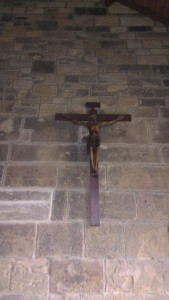
In 1942 two young priests, Father Peter Storey and Father Michael O’Sullivan, cycled out from Middlesbrough intent on exploring the remains of Mount Grace Priory. Poring over their map while resting in the ruins, they spotted a notation reading “Lady Chapel (ruin).” Scrambling up through the woods, they too discovered the ruined chapel and the cottage which was locked. Fascinated by their find, they set out to investigate the history of the place. In 1948, Marist Fathers accompanying a scout troop camped at the site and celebrated Holy Mass in the ruins for perhaps the first time since the Dissolution.
Then in 1952 Sir Hugh Bell, faced with heavy death duties, was forced to consider the future of the Ingleby estate. It was hoped that the Carthusians might return and restore the Priory, but due to lack of funds as well as monks, the idea was abandoned and in 1953 the Priory ruins at the foot of the hill were taken over by the National Trust. As for the Lady Chapel site, Lord Eldon and Ralph Scrope purchased this at Father Peter Storey’s instigation, and a trust was established to oversee the rebuilding of the chapel.
In the summer of 1954 John and Ordie McComb and their young family became the new tenants.
Ralph Scrope then asked Mr Robson, the York architect who had restored the Shrine of Margaret Clitheroe, to draw up plans for the restoration of the Lady Chapel. These were approved in 1956 and planning permission was granted the following year.
In 1958 the Lady Chapel was established as a National Monument, and the first diocesan pilgrimage for the Feast of the Assumption of Our Lady was organised, since becoming an annual event.
Restoration work began in 1959, using closely matching stone from the remains of Rosedale Abbey and building on existing foundations. The slightly larger stones of the original chapel reaching about two metres in height are easily discernible, while those of the original east wall, weathered over the centuries, have remained mostly intact. On the Nativity of the Blessed Virgin Mary, September 8 1961, the rebuilt chapel was re-dedicated by Cardinal William Godfrey, Cardinal Archbishop of Westminster.
Within the chapel today, a clear focus of devotion is the 17th-century statue of the Madonna and Child given by Lady Eldon. Above the altar hangs a carved wooden crucifix, also a gift of Lady Eldon. Visiting Germany in the early years of Hitler’s regime, she admired it in an antique shop and approached the proprietor. He offered it to her as a free gift, if she could procure his emigration – for he was a Jew. This she duly did. It thus hangs as a reminder of the Holocaust, and as a precious symbol of liberation. The stained glass windows carry the arms of Queen Katharine of Aragon and of the Scrope and Eldon families in whose memorial the chapel stands restored.
Besides the presence of mason’s marks at ground level, there are remnants of inscriptions, initials and prayers of pilgrims, incised into the old stone during penal times. Most common among these are Calvary crosses, associated with pilgrimage to the Holy Land – that is, a cross mounted on two sloping steps, and with or without initials on either flank. Of the earliest to be dated is one on the inside north wall, 1647. Fragments of prayers are also visible, such as “mercy on me”, “to thy cross I flee”, “Son of Mary hear”, along with initials such as IHS, IW and WB. Around the south doorway, on the inside, are incised the names of a man and his wife.
In 1965 the Franciscan Friars returned to Osmotherley to resume their ministry supporting pilgrims to the restored shrine. Under Father Dunstan Baker OFM additional facilities were built to accommodate the growing number of pilgrims, and a window was cut between the chapel and the adjacent barn to provide an extension to the chapel. In 1985 a Blessed Sacrament Chapel was constructed using the footings of the old hermitage with a small cloister connecting it to the barn and the Lady Chapel.
However, in 1994 the friars again had to withdraw due to dwindling numbers and the Bishop of Middlesbrough, The Rt Rev John Crowley, invited Benedictine monks from nearby Ampleforth Abbey to take their place. Monks, assisted by lay volunteers, looked after the buildings and helped care for pilgrims visiting the shrine. It was returned to the Diocese of Middlesbrough’s care in 2013 and is now within the pastoral responsibilities of Saint Mary’s Cathedral, Middlesbrough.
Regular Masses and services take place during the year, with a Vigil Mass being offered at 3pm on Saturdays (fulfilling the Sunday obligation) and on feasts of Our Lady. The chapel remains open at all times, and every day pilgrims come, singly and in groups, to ask Our Lady to intercede for their various intentions.
Mary, Mother of Divine Grace – pray for us!
Our Lady of Mount Grace – pray for us!
